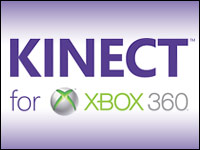
Microsoft on Friday announced that it is putting a fresh spin on advertising. Rather than the passive type of advertisements that viewers often zip past after “timeshifting” programming with DVRs, Microsoft’s NUads will offer an interactive — and more personalized — experience.
The software giant has signed up Toyota, Unilever and Samsung Mobile and will begin rolling out ads this fall. Consumers who use the Xbox 360 video game console with the Kinect motion sensing controller to watch videos from Microsoft partners including ESPN, TMZ and the UFC will see the new ads.
The ads will incorporate interactive elements. In the first set to roll out, the NUad will allow viewers to vote on questions posed during a Toyota spot. Users will be able to vote by pressing a button on the standard gaming controller or even speaking when using the Kinect. Toyota will have access to the data, see how people voted, and even get demographic information on those who interacted with the ad.
Microsoft’s interactive ads could be a way to make people actually interested in viewing commercials — a huge advantage given that there is so much more competition for eyeballs.
“Advertisers and content providers have to find ways of making this engaging,” said Billy Pidgeon, principal analyst at M2 Research. “It is a way to turn advertising into entertainment — but it is not the only way.”
Microsoft did not respond to our request to comment for this story.
Targeted Ads
The upcoming Toyota ad will reportedly ask viewers what common technology or device they’d like to be see reinvented, while an Axe/Lynx body spray will ask whether the male-oriented scent be given to girls. The data provided to the respective companies will note some demographic information, but given the power of the Kinect, these could just be the beginning of more targeted ads.
“Because Kinect tracks ‘skeletons’ when used in ads, it might be able to identify the number of people in a room,” saidN’Gai Croal, chief consultant at Hit Detection. “This could be used in the future to trigger the multiple versions of a spot, whereby it would be possible to tailor the ad to the number of people in the room.”
Creating ads that are more interactive and responsive to the audience could be what it takes to keep the viewers engaged.
“The ‘Don Drapers’ of the our day could do interesting things with more knowledge,” Croal told the E-Commerce Times, referring to the ad guru from TV’s “Mad Men.”
“Kinect could make this go from very passive ads that viewers merely watch to an actual interactive experience,” he said.
Direct Advertising
The Kinect could also create an opportunity for truly direct advertising. Instead of just a targeted letter or email, advertisers could target individuals and even allow for follow-through immediately.
“There could be ads that go beyond just asking questions,” added Croal.
“There could be ads that encourage response,” he said, “such as movie ad that allows users to call up more content — such as an extended trailer or behind the scenes look — but it could also provide a way to buy a ticket during the ad.”
Gaming Advertising
Microsoft likely wants a piece of the reported US$68 billion U.S. TV advertising business — especially as it looks to compete with broadcast and cable TV by delivering video content from multiple sources. However, it isn’t clear if the software maker would utilize this technology in actual video games as well.
“Gamers are super sensitive of anything that will interrupt their experience,” warned Croal. “People who watch sports on TV — or even movies — are more used to the interruption from advertising, but gamers won’t respond as well.”
Microsoft has been involved in the “in-game” advertising space for years however, notably selling placement integration in things such as sports and racing games.
“That was very logical,” added Croal. “But trying to interrupt a game, even with an interactive, isn’t going to be a good idea.”
However, as with TV, there could be a market for interactive ads within games, especially if these offer an experience that is similar to the actual game.
“More people want free gaming,” Pidgeon told the E-Commerce Times. “This could be a way to monetize those, and gamers might respond.”











































Social Media
See all Social Media